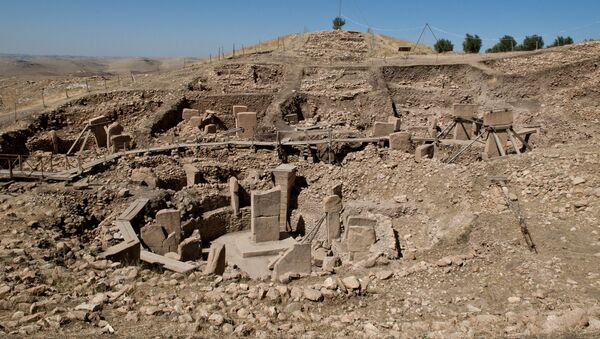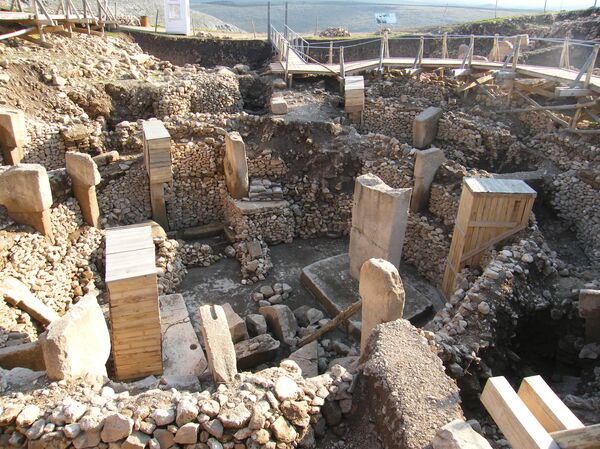The temple consists of an array of semi-subterranean chambers dominated by T-shaped megaliths up to 18 feet tall, most of which are decorated with detailed carvings of wild predatory animals and human silhouettes.
The site also contains numerous limestone sculptures, remnants of animal bones, carved beads, amulets and flint tools; all of the findings pointing to a much more complex culture among the hunter-gatherers living in that period than previously thought.
There's no clear sign that humans lived in Gobekli Tepe, researchers say. According to the new study, published in the journal Science Advances, the site does not appear to have been a place of permanent habitation or defense and its only purpose seems to have been ritualistic.
At least 408 of the bone fragments found at Gobekli Tepe come from human skulls, indicating that they were being collected. Some of the skulls show signs of a unique type of post-mortem modification with deep, straight, grooves carved into their surfaces with the use of stone tools.
“It must have been quite an experience for them,” Lee Clare, a professor at the German Archaeological Institute and coordinator of research and field work at Goebekli Tepe, wrote for the Tepe Telegrams website.
“The buildings were semi-subterranean, and you can imagine the inside lit by a torch causing the T-shapes to flutter in the light. There was likely drumming and singing going on — and skulls, dangling.”
Purposeful alterations indicate that people who visited Gobekli Tepe assigned symbolic importance to skulls. Thus, evidence leans strongly to the site being the oldest temple yet identified.





